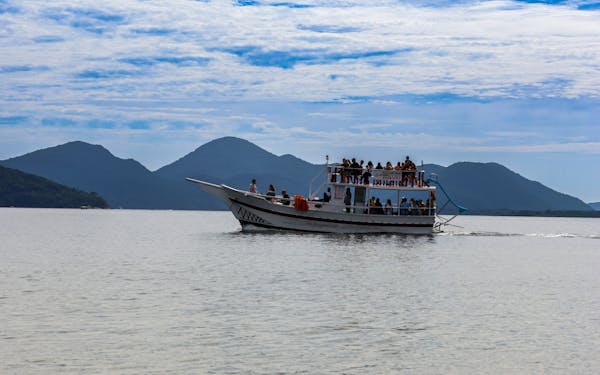Kenya is a land of breathtaking landscapes, vibrant cultures, and unforgettable wildlife experiences. From the famous Maasai Mara to the snow-capped peaks of Mount Kenya and the tropical beaches of Diani, this East African gem has something for every traveler. But when exactly is the best time to visit Kenya?
Choosing the right time can greatly influence your safari adventures, beach holidays, and overall travel experience. Here’s a detailed guide to help you plan your perfect Kenyan escape.
Table of Contents
Overview of Kenya’s Climate
Kenya lies near the equator, which means it enjoys a relatively warm climate year-round. However, the country has two rainy seasons and varying weather patterns based on geography and altitude.
Main Climate Zones:
- Coastal Areas: Hot and humid
- Central Highlands (e.g., Nairobi): Mild, cooler at night
- Northern & Eastern Kenya: Hot and dry
- Western Kenya: Warm and wetter
Dry Seasons (Best for Safaris & Outdoor Activities)
1. Late June to October – Peak Safari Season
- Why Visit: This is widely regarded as the best time to visit Kenya, especially for wildlife viewing.
- Highlights:
- Dry weather and clear skies
- Ideal for game drives in national parks
- The Great Migration in the Maasai Mara (July–October) – over a million wildebeests and zebras cross from Tanzania into Kenya
- Best Places:
- Maasai Mara
- Amboseli National Park
- Lake Nakuru
- Samburu Reserve
2. January to March – Calmer, Quieter Safaris
- Why Visit: These months also offer good weather with fewer tourists than the July–October period.
- Highlights:
- Excellent birdwatching
- Baby animals born during this period
- Warmer temperatures
- Best Places:
- Nairobi National Park
- Tsavo East & West
- Laikipia Plateau
Rainy Seasons (Lush Landscapes & Lower Prices)
3. April to May – Long Rains
- What to Expect: Heavy rainfall across the country, especially in the highlands and coastal regions.
- Travel Tips:
- Not ideal for safaris – muddy roads and some parks may be difficult to access
- Hotel and safari prices drop considerably
- Coastal areas are less crowded, but humidity is high
- Activities:
- Great time for cultural experiences and photography of lush landscapes
4. November to Mid-December – Short Rains
- What to Expect: Showers are lighter and often occur in the evenings.
- Why Visit:
- Still possible to see plenty of wildlife
- Fewer tourists, meaning more intimate experiences
- Accommodation deals available
- Travel Tip: Carry waterproof gear and stay in lodges with good road access
Best Time for Specific Activities
1. Safari Adventures
- Best Time: July to October (for the Great Migration)
- Good Alternative: January to March for fewer crowds and baby animals
2. Climbing Mount Kenya
- Best Time: January to March and July to September (clearer skies and dry trails)
3. Beach Holidays (Mombasa, Diani, Malindi)
- Best Time: December to March and July to October (warm and sunny)
- Avoid: April to June – coastal rains can disrupt activities
4. Birdwatching
- Best Time: November to April – many migratory species arrive
- Popular Spots: Lake Nakuru, Lake Naivasha, Kakamega Forest
Monthly Breakdown: What to Expect
| Month | Weather | Travel Conditions | Best Activities |
|---|---|---|---|
| January | Dry & sunny | Great | Safari, hiking Mount Kenya |
| February | Warm & dry | Excellent | Wildlife viewing |
| March | Warmer, start of rains | Good–Fair | Safari, cultural tours |
| April | Long rains | Not ideal | Indoor/cultural experiences |
| May | Heavy rains | Challenging | Fewer tourists, budget travel |
| June | Rain fading | Improving | Transition to dry season |
| July | Cool & dry | Peak | Great Migration begins |
| August | Dry & cool | Peak | Prime safari season |
| September | Pleasant | Excellent | Migration, beach & mountain trips |
| October | Warm | Excellent | Last month of migration |
| November | Short rains begin | Fair | Birdwatching, off-peak safaris |
| December | Short rains fade | Good | Beach holidays, festive season |
Budget Considerations
If you’re a budget traveler, consider traveling in the shoulder seasons like November or early December, when prices are lower, and parks are less crowded.
During peak safari months (July–October) and Christmas holidays, prices for flights, lodges, and tours can rise significantly. Early booking is recommended if you’re planning to visit during these periods.
Local Festivals and Events
- Lamu Cultural Festival (November): A beautiful Swahili culture celebration on the Kenyan coast
- Maralal Camel Derby (August): A unique event in northern Kenya
- Nairobi Restaurant Week (January): A treat for food lovers
Final Thoughts
So, what’s the best time to visit Kenya? If you’re going for iconic wildlife encounters, the dry seasons from July to October and January to March are your best bet. For fewer crowds and lower prices, consider the shoulder seasons like November or early December. Regardless of when you go, Kenya promises incredible memories that will last a lifetime.



